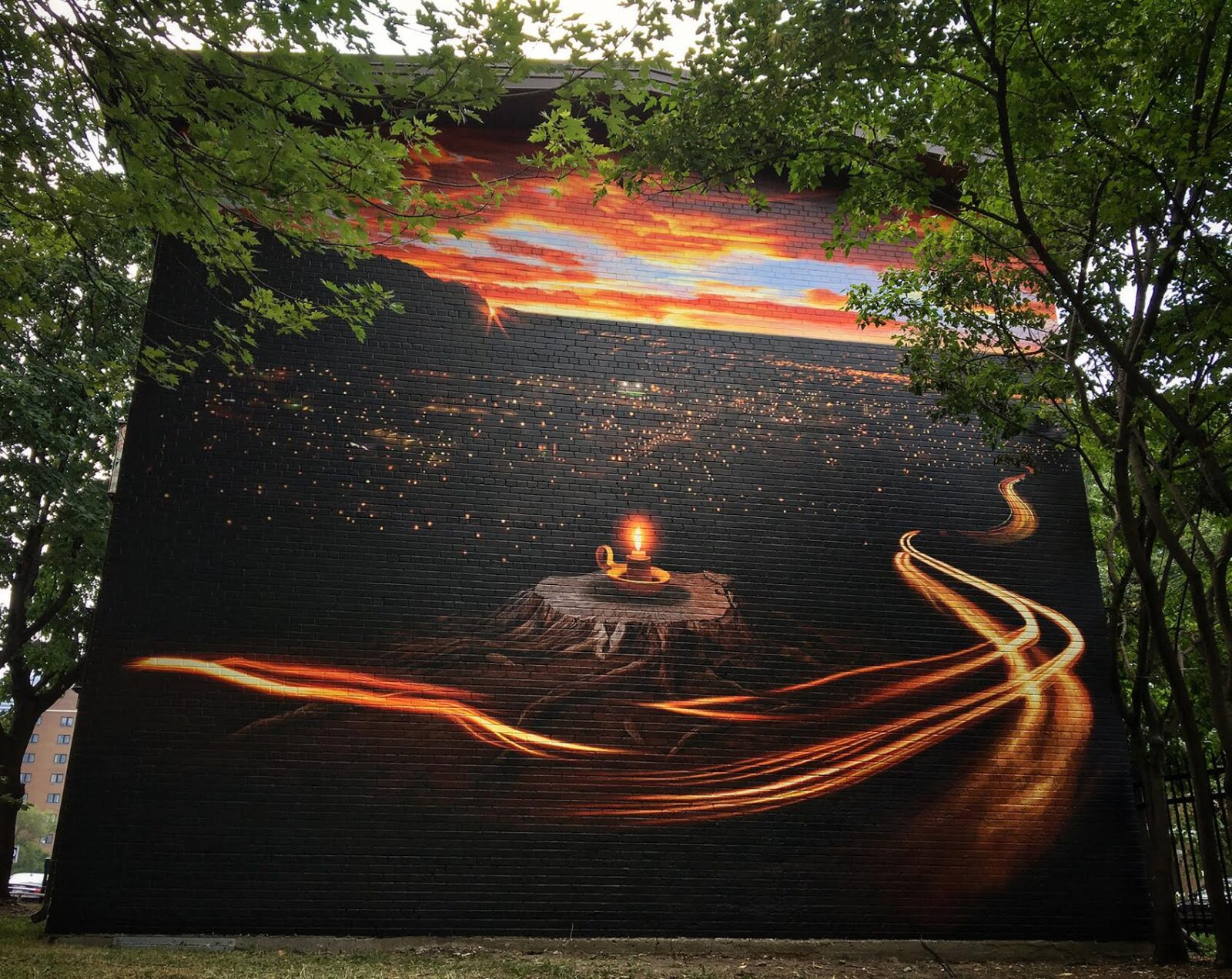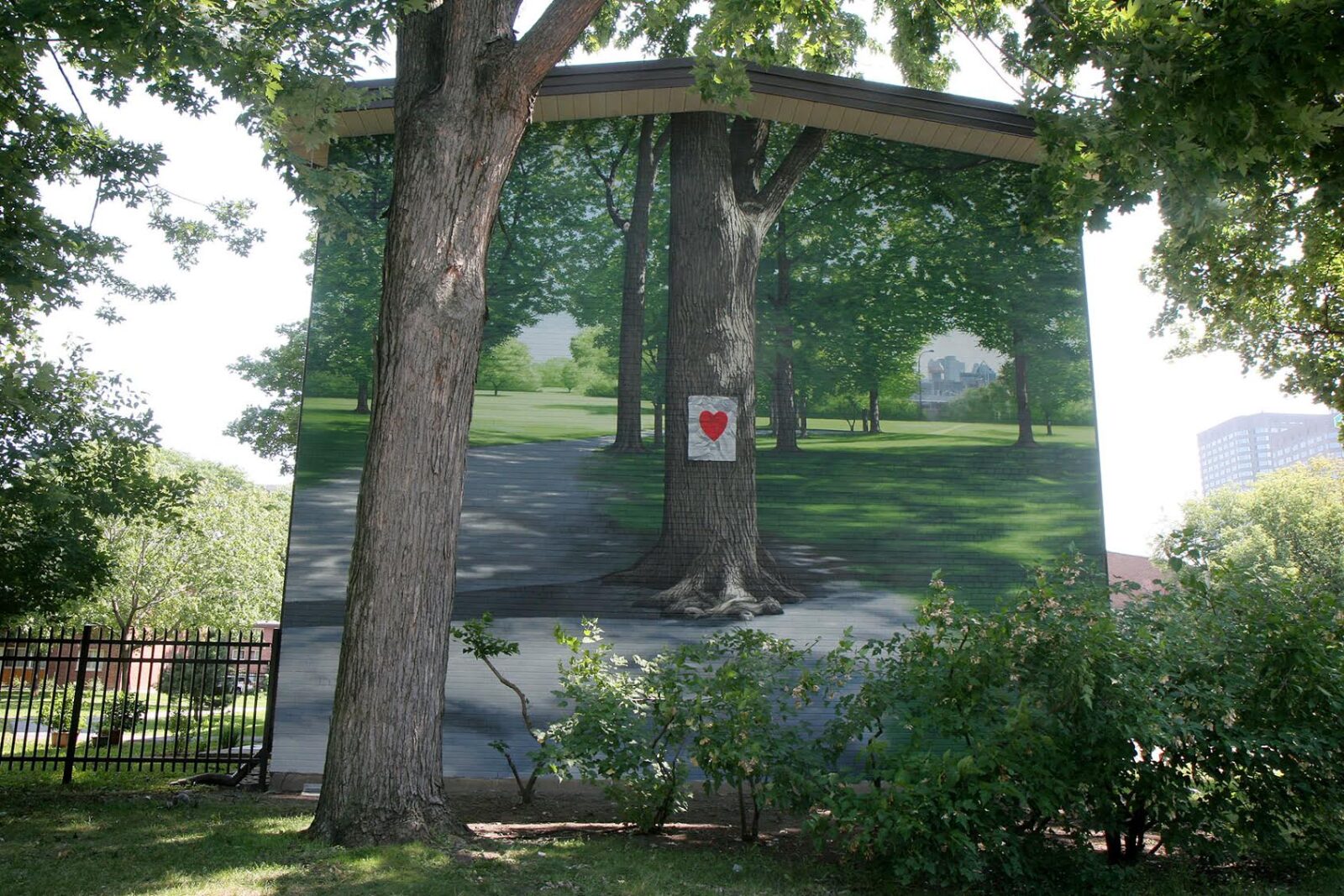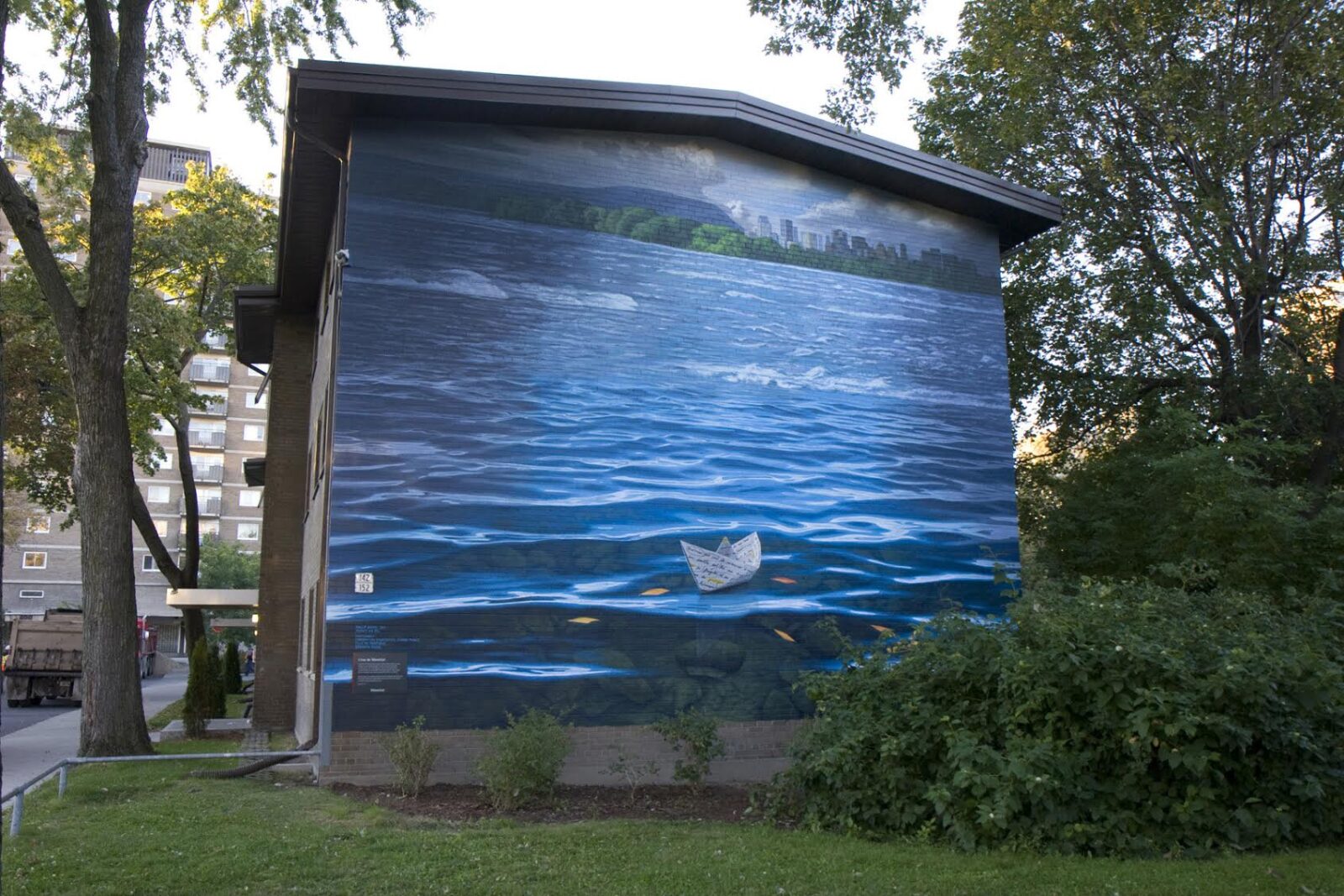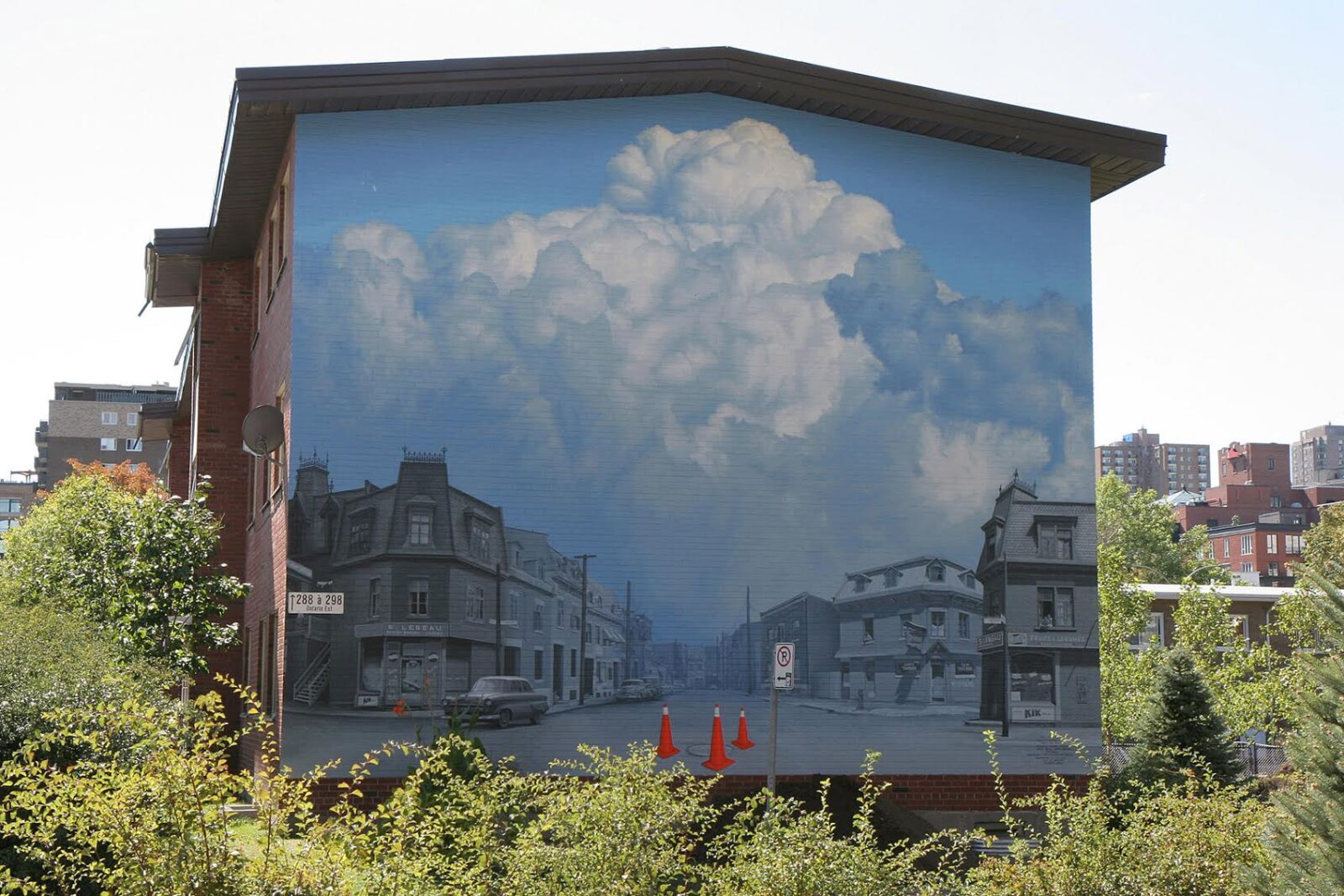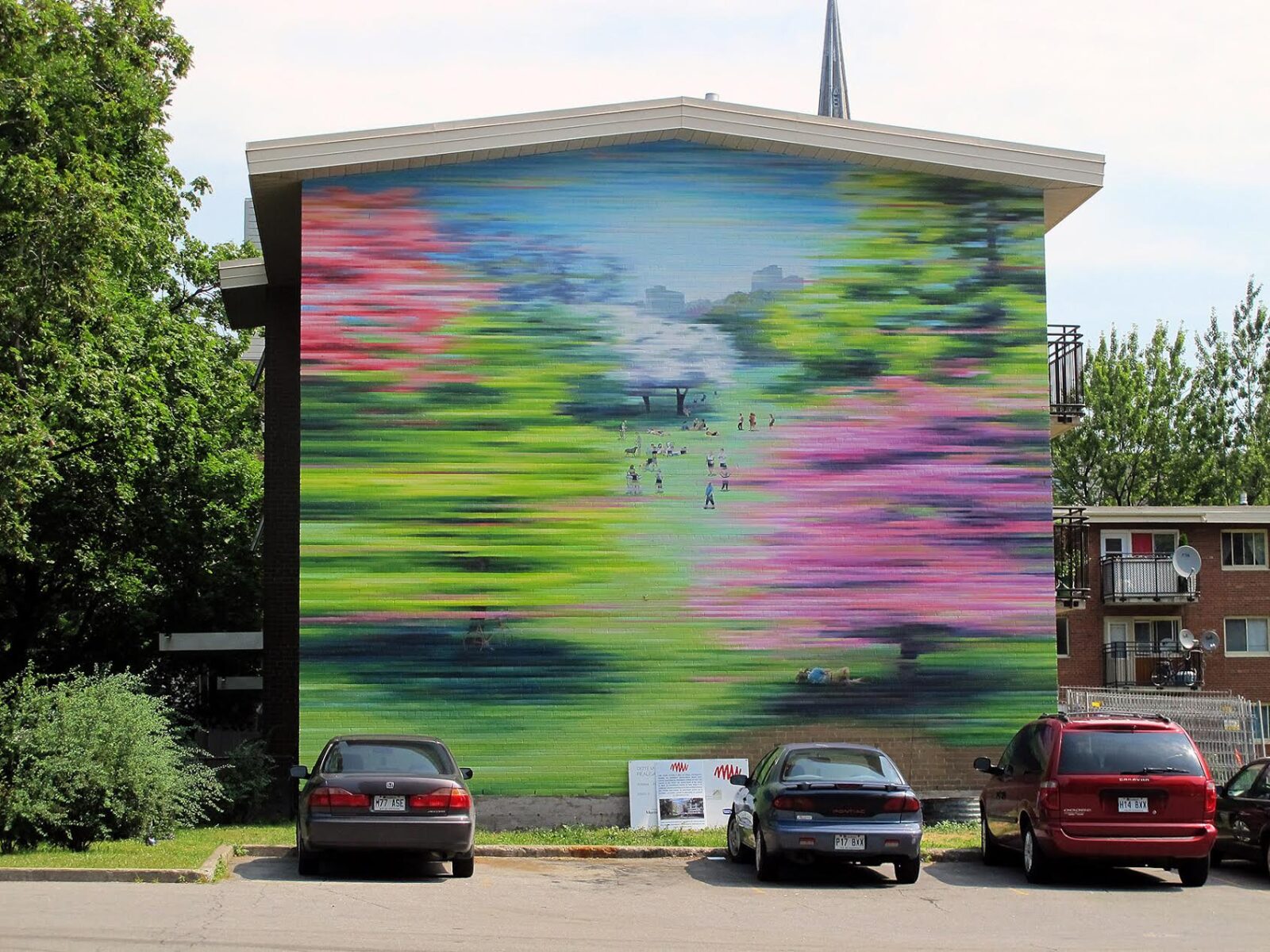Light and creativity: An interview with Phillip Adams
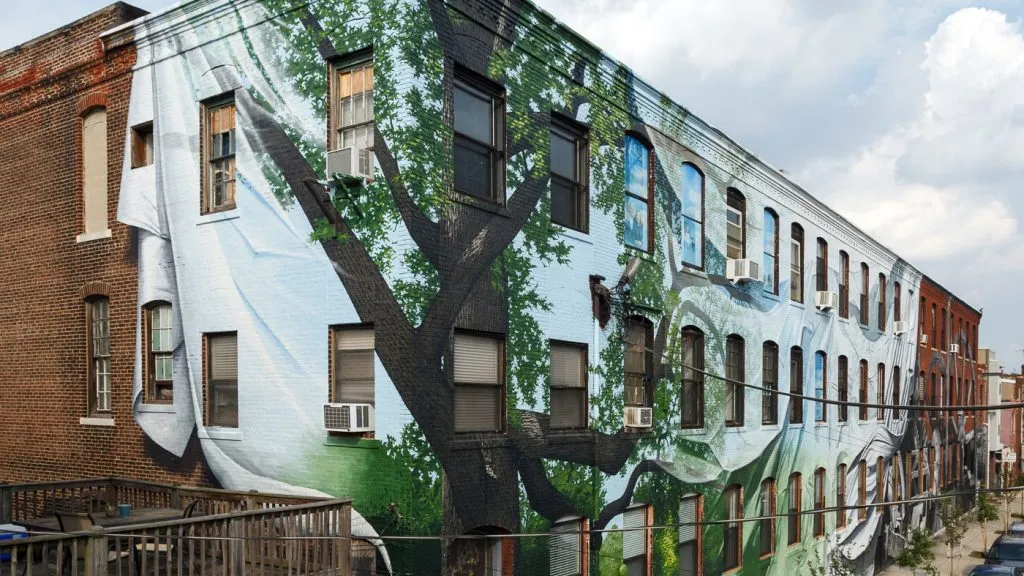
Artist Phillip Adams has been working with Mural Arts for over 10 years – and has had some beautiful artistic adventures across the country. Read on to hear from Phillip about mural-making, community-building, and the art of being a hybrid artist-historian explorer.
Carly: How did you start working with Mural Arts?
Phillip: I moved here in 2004 to go to the University of Pennsylvania for my Masters Degree, where I took a class with Jane Golden and Don Gensler. I ended up as an assistant that summer with Don, in between semesters, working on a mural on 40th and Brown.
In that process, one of the amazing things I started to think about, related to murals and public art in general is how as an artist, the community process takes you outside of yourself. In the studio, it’s you in your own head creating your own problems and asking your own questions, and a lot of what you do as a public artist takes you immediately outside of yourself. You’re interacting, whether it be through themes, ideas, or meanings, and through this public art work, I started to be more aware of the look and feel of my role as an artist as I create public art.
Carly: Have you taken that approach elsewhere, like in your work in Montreal?
Phillip: The organization that I worked with, MU, in Montreal had seen Mural Arts while they were traveling here for Cirque du Soleil, and they wanted murals at Habitations Jeanne Mance, an affordable housing community at the heart of the Latin Quarter. It’s this huge, amazing community of 17,000 diverse people who are extremely proud of where they are, but they still suffer the stigma of being a community housing project. Talking with the residents, it was immediately clear that as a public artist, you are problem solving – not only to create an immediate impact of beauty and ownership and the idea of place, but also, getting people to register a place as unique when you’re walking by it.
I worked in Montreal for 8 years, and towards the end of that time period, one of the universities in Montreal completed a study of Habitations Jeanne Mance. Previously, keywords for that place were just stereotypes: violence, drugs, gang, that kind of thing. In the newest study though, the keyword for everything was art. They didn’t believe it. They thought they were catching keywords from neighboring areas, like the Quartiere des Spectacles. They reconfigured the search, but again the keywords came back as “art.” They still couldn’t process the level of change in perception. Giving that voice to a hidden community, which was the goal in the beginning, showcased the beauty and amazingness there and changed the perception. In the early 2000s, if a tourist walked through Habitation de Jeanne Mance, they were followed, and now, tourists walk through because they want to see art. Or see the orchard, the community gardens, or the stormwater management that they’ve done.
It’s one of the cool things about what we do: you get to see tangibly and socially how once you open a door and give a voice in an artistic way to a group of people, it becomes about the potential and the growth.
Carly: It sounds like in Montreal it was about unifying and putting a community on the map that’s hidden. Is that similar to your work in Philly?
Phillip: In Philly, there’s been a range of projects that are community-based, but also projects that are issue based. The Industrious Light series is a great example of one of the issue based projects.
In the 19th century and through the mid 20th century, Philly was known as the “workshop of the world.” The industries found here defined neighborhoods – like Brewerytown, where there were two main breweries. Neighborhoods completely changed, but the things that we do and the remnants of these buildings are a tangible history of the city. It’s knowing where the roots and the city come from and what they turn into, and when you lose that history, there’s that aspect of great loss. You have all these buildings that are lying vacant, being destroyed, being rehabbed, turned into other things. I started to think about it as these hidden gems that needed a voice of their own.
The first in the series was at Ortlieb’s, where the defunct brewery had already been destroyed. An architecture firm salvaged the bottling center right behind it and the building is absolutely phenomenal. With the mural, we showcase what was and also what will be, because that mural is still there and there’s that sliver of Ortlieb’s that is still there but it’s also all new construction in that area.
The next in the series is at Rowhouse Spirits. The Philadelphia Brewing Company repurposed the old Weisbrod & Hess Beer Brewery building, but there’s still one massive vacant building attached to the brewery which has some of my mural on it. The building attached is now syndicated to be torn down, but there’s a huge petition to try and save it. These are historical monuments that are completely going away. Neighborhood fabrics are completely changing and losing that voice and history.
Carly: In that context, I think it’s so interesting that you’re working on a building at 1241 Carpenter, which used to be a factory, right?
Phillip: Exactly, the Carpenter building was originally the Leviathan Main Belting Company. Back when everything ran on steam, they created the huge belts that kept those gears running. You can think of that as the place where it created the potential for all these other industries to function. Later, it transitioned into canvas and tarp manufacturing for covered wagons and sailboats. The owner of the building has transitioned three times, and is now an entrepreneurial type of dude, who, since the 60s, has had artists working in the building with him, slowly but surely carving out areas for artists to work in. Now that entire building is an incubator of small business, entrepreneurs, artists, makers, everything. The owner curated a community that fed his creativity and ideas but also provided a space for artists, knowing that places for artists are running out. He saw this building as a giving tree to them but also them to the arts community. The mural design and idea was through that machinery, to the curtains and drapery, to the fabric, to the tree, more as a symbolism, showcasing these hidden gems of history that have evolved and both of these speak so much for the urban fabric.
How much history do you know about the buildings where you live? We can’t let this stuff go away, our curiosity of wondering what these places are. All the information is still floating out there, old maps and everything else we still have access to.
Carly: You remind me of a hybrid artist-history urban explorer.
Phillip: Right now it feels like that on this project! In a place that loves history as much as Philadelphia (Liberty Bell, birthplace, we got it all!) we take very little value in preserving some of it. In the brewing industry, pre-Prohibition, there were over 700 breweries in Philadelphia that got so big that they started to export regionally–a plethora of breweries, businesses, communities that defined sections of Philadelphia. Prohibition came, and pretty much destroyed all of them. Once Prohibition lifted, some of the breweries got back into the swing of things, but the number shrunk, and then big business came in and started to absorb them. By the late 1980s there were 0.
But after that, then what happened? The slow emergence of craft brew. It went from that huge thing, to zero, and now to these little things–a new batch of ingenuity and interest in the old, a new palette, new taste, new idea. It’s this light and creativity that I think is so unique to industrial cities– it’s what can change, and also the realization of potential. It’s amazing how much beauty and weight can be put on something as simple as a symbol.
Carly: I can’t wait to see how the Industrious Light series unfolds. Thanks so much, Phillip!
